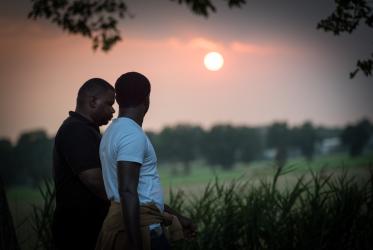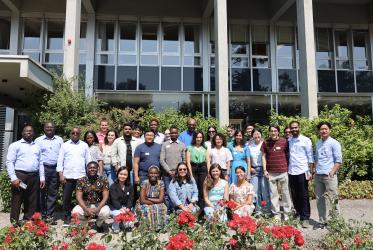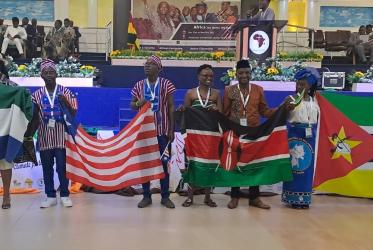The Youth in Asia Training for Religious Amity (YATRA), as a space to encounter other religions, offered me a fascinating yatra (pilgrimage) into Hinduism through the lectures of Prof. Meera Baindur from India who introduced Hinduism as a religion of epics and mythologies and helped me to encounter my own Christian faith afresh.
This year’s YATRA training, organized by the World Council of Churches (WCC) in cooperation with the Cambodia-based Centre for Peace and Conflict Studies, was an opportunity for 25 young Christians from different parts of Asia to learn about other religions and become involved in the “pilgrimage of justice and peace” which the WCC Assembly had called for in 2013.
A former Sanyasin (ascetic) and now professor of Philosophy and Humanities at Manipal University, Prof. Baindur had the YATRA 2015 participants captivated with her tales of the great epics the Ramayana and the Mahabarata, and the mythology of the Samudra Manthan – The Churning of the Ocean of Milk – which is the theme of the iconic bass relief of Angkor Wat.
Crafting humour, storytelling, chanting, and a bit of dancing into her lectures, participants were in for a treat. The atmosphere created was that of children listening to a mother telling a bedtime story. Over four sessions and an exposure trip to Angkor Wat, Prof. Baindur presented an overview of what we now know as Hinduism.
During our exposure visit to Angkor Wat what we saw carved into the stone walls were stories and tales of great romance, sacrifice, divided worlds and fierce battles. Our visit brought life to the tales Prof. Baindur told us the day before.
Angkor Wat with its famous bass reliefs portrayed an amazing show of strength, power and violence in the name of god. It was, shall I say, a glorification of militarism as the answer to a moral war between what was perceived as good and evil – a feature common in many religions.
Monkeys perched on the backs of buffalos, biting the necks of horses and the heads of soldiers brought comic relief to the imagination of animals participating in wars started by humans. The great god releasing hundreds of arrows in all directions all at once made vivid the ancient imagination of the power of the divine.
Hinduism, Prof Baindur said, has an “amoeba-like placidity of swallowing other people’s god.” This flexibility makes defining it such a complex and almost impossible task.
And unlike Christianity, to study Hinduism is to study its people’s practices (orthopraxy), not a set of sacred texts or documents (orthodoxy). The label or naming of “Hindu” itself and its categorization as a religion came much later when colonialists wanted to be able to identify the local people’s practices in Eurocentric terms that they were accustomed to.
Hence began the quest to reify Hinduism through questions like: What sacred text guides you? How do you practice your belief? What set of rules do you go by? How does a person become a Hindu? Do you have some sort of ritual, like a “baptism”?
On this progression, Prof Baindur cautions any fixed definition of Hinduism as going against Hinduism’s very nature as a “conglomerate of beliefs”. Of particular concern today is the singling out of one dominant group’s practices and context as the standard definition of Hinduism.
The latter point prompted me to further reflect. In some ways, isn’t this the challenge faced by the global Christian community?
In my Javanese, Indonesian context, when Christianity was first introduced, Dutch missionaries insisted that to be baptized as Christians, Javanese men had to leave their native culture and adopt the “Christian Way” as defined by the missionaries.
At that time, it included removing Javanese native clothing in exchange for shirts and trousers, singing Dutch hymns, and so on. These missionaries seem to have come up with a one-size-fits-all definition of Christianity.
I feel that as Christians we must remain engaged in a journey with the scripture and cautious of any simplification of God’s message to a single one-size-fits-all application of the message. Faith requires constant contextualization. We mustn’t settle or stop being challenged by our scripture.
As one participant put it, “Hinduism is an ocean” and our experience at YATRA was merely a brief exposure to this vast and complex set of beliefs. But what this journey into Hinduism prompted in me was a fresh understanding of Christianity itself as a religion of amazing diversity and contextual adaptation.
Attempting to universalize particular versions of Christianity as “the” valid version distorts Christianity. In the end my encounter with Hinduism in YATRA enabled me not just to discover Hinduism but also to realize that there is so much about my faith that I have yet to explore if I have to fully comprehend global Christianity today.






